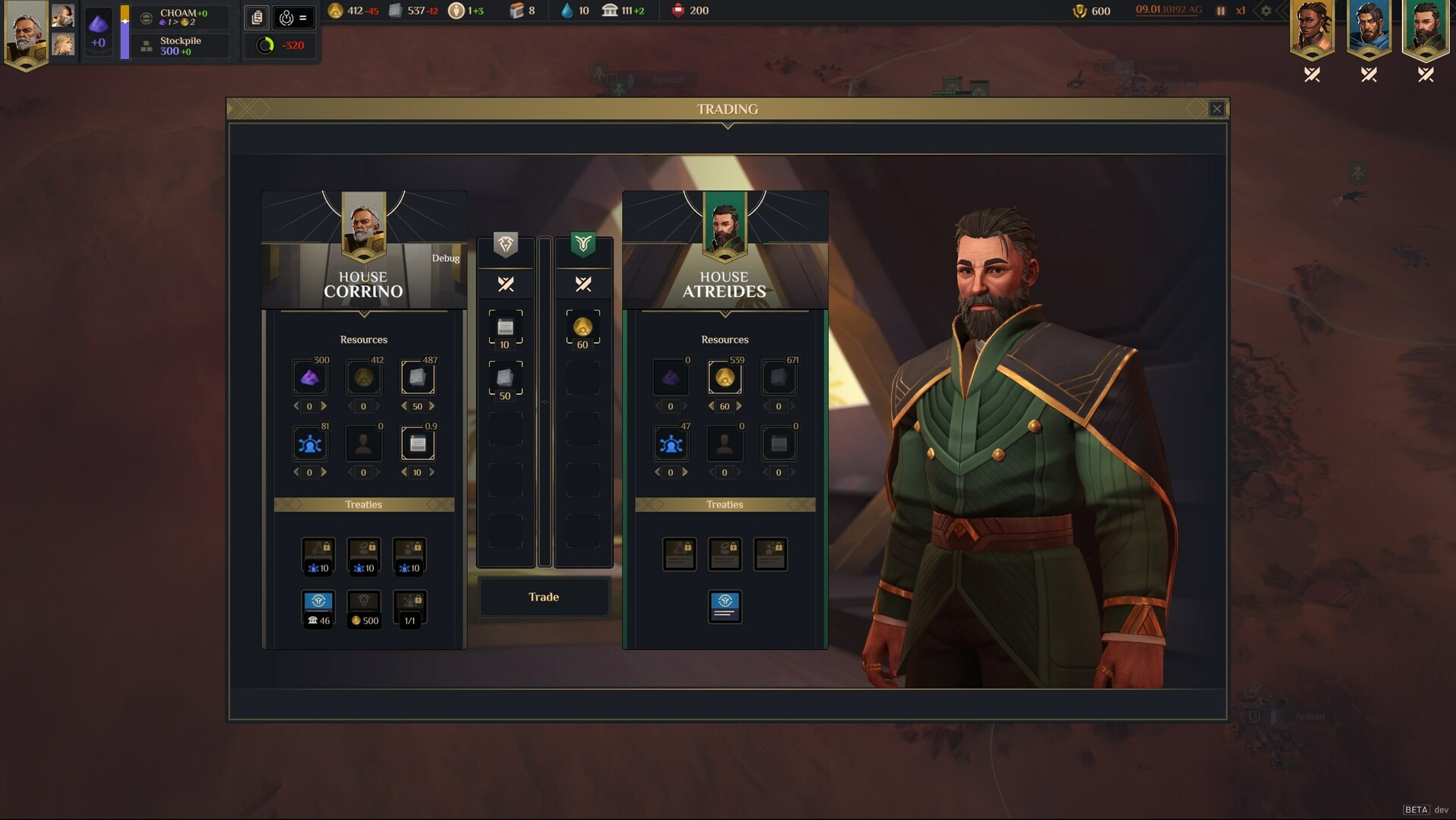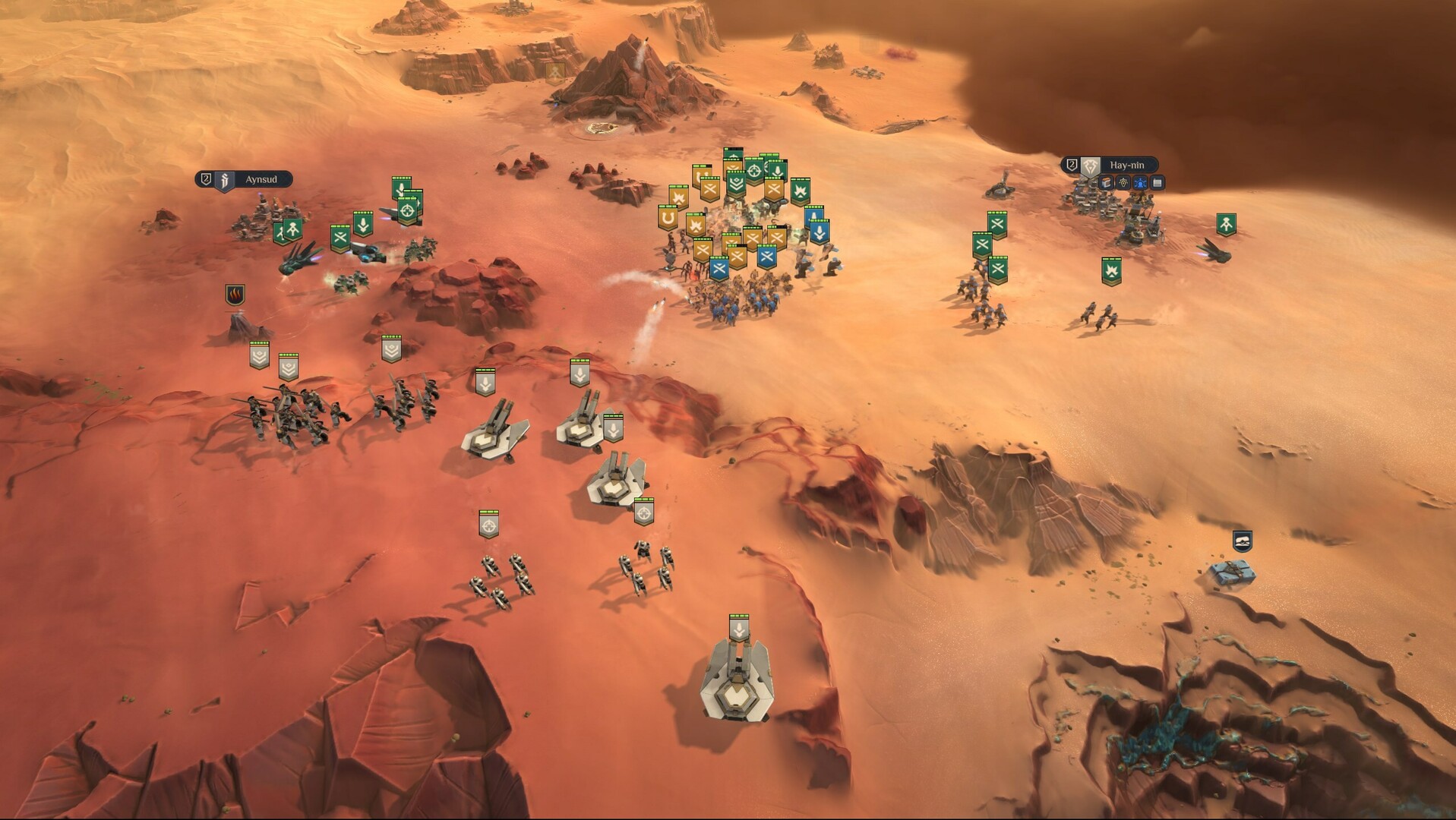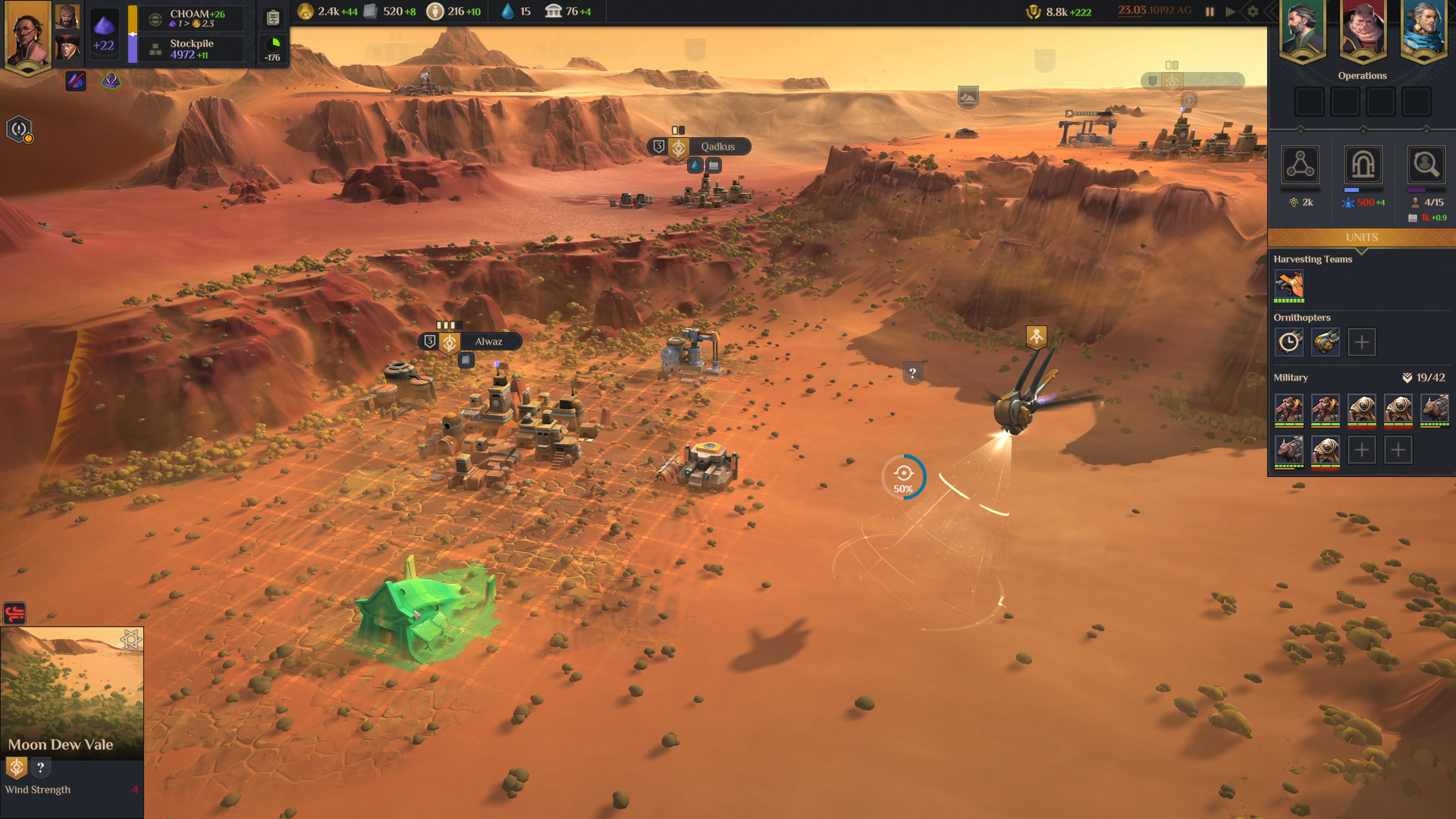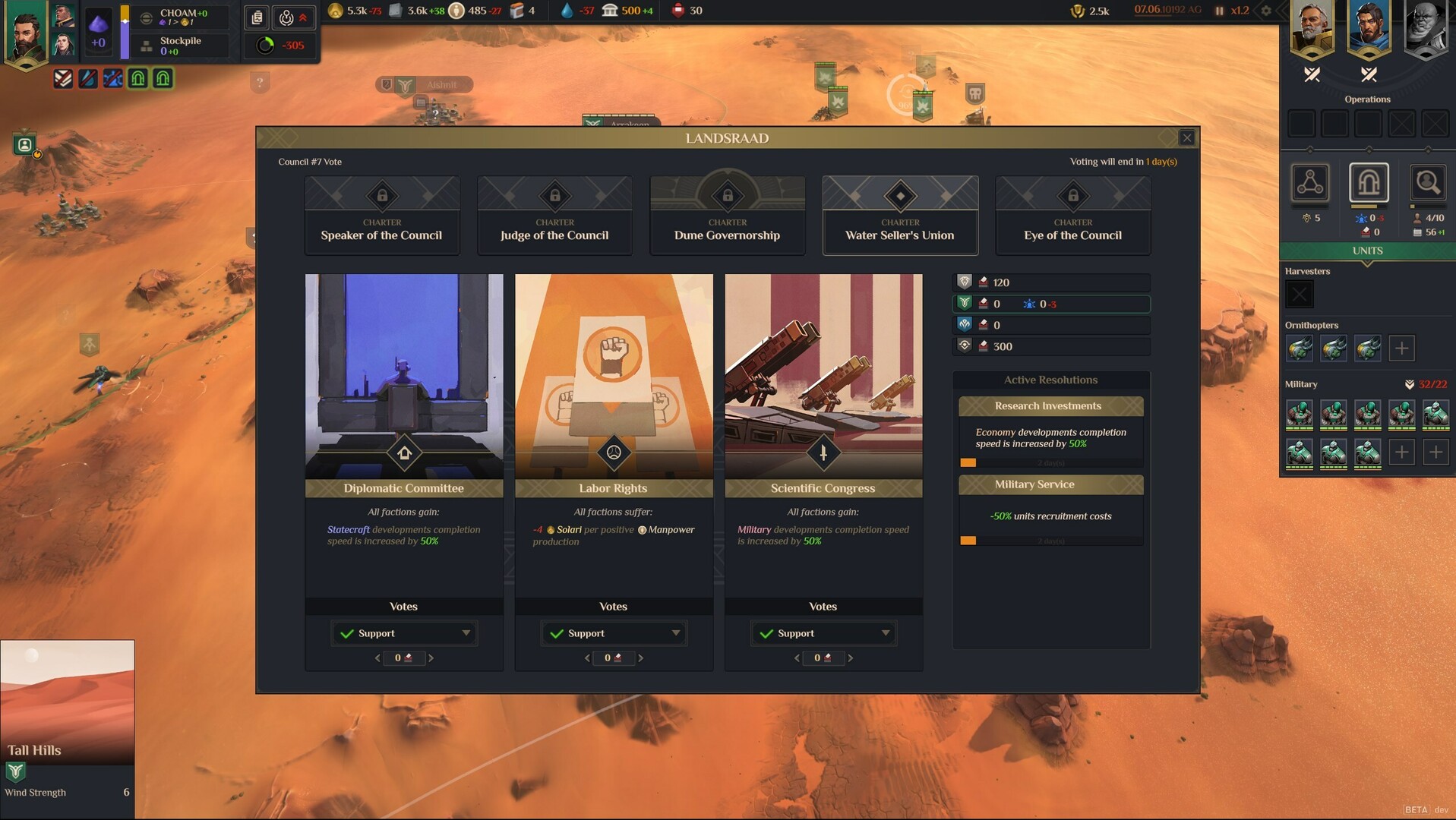Dune: Spice Wars recently celebrated its first anniversary. Sharing a lineage with earlier Dune games that went on to define the real-time strategy (RTS) and grand strategy genres, Spice Wars continues to build upon the potential of the Dune universe as its audience on PC is growing in early access. Recently, the Conquest update just launched, adding a new single-player campaign for players to dive into.
Shiro Games recently shared its insights and lessons learned in the game’s first year. As this unique spin on the grand strategy game for Frank Herbert’s Dune universe grows, the aim is to become the definitive Dune strategy experience.
A Growing Community

The first year of Dune: Spice Wars was a success due to the passionate community offering feedback and consistent updates from Shiro Games. The game also found its way to PC Game Pass, making access easier.
“Over the last year, we’ve had the pleasure of working alongside an incredibly passionate and active community who have helped and supported us every step of the way throughout the development of Dune: Spice Wars,” shared the team. “We have applied a variety of tweaks and changes that have almost entirely been suggested by our players.”
A Year of Evolution in Dune: Spice Wars
Here’s a quick breakdown of how the game has evolved since its launch.
Multiplayer
Shiro Games crafted a multiplayer experience focusing on 2v2 engagements or free-for-all matches for up to four players. The developers are still updating the multiplayer experience, with more to come.
New Faction
At launch, Dune: Spice Wars featured House Atreides, House Harkonnen, the Smugglers, and the Fremen as playable factions – each offering unique strategic advantages and paths towards victory. House Corino joined as a new faction. Focusing on consolidating power through political deals and economic plans with the other groups, House Corino offered players a way to focus less on military engagements and more on objectives to score victory through Hegemony.

New Combat Units and Updates
Several updates and tweaks to military combat expanded player options and fine-tuned mechanics for engaging rival factions. The Air and Sand update added flying units to the battlefields on Arrakis, while The Line in the Sand update introduced a variety of tweaks and changes based on player feedback. These changes included adding more defined military positioning and notifications during combat, improved map readability, altered Spice spawn points and rebalancing the economy.
Expanded Accessibility Options
Various assistance options introduced accessibility solutions for players of varying needs. In addition to a colorblind correction mode and tuning options, other options to tune UI elements ensure readability for all.
Building Desert Power in Dune: Spice Wars
Dune: Spice Wars focused on the single-player grand strategy experience with the four base factions. Over time, the game has seen new content updates that have expanded upon the core game. The goal is to offer variety in the different factions and modes, each giving a different experience in navigating the world of Arrakis and political intrigue within the Landsraad.
Multiplayer mode was a significant addition. With either AI battles or against other players online, the mode focuses on stand-alone battles without building a faction up the campaign. Flexibility is important in Dune: Spice Wars, so players can freely tune their multiplayer experience – such as focusing on team battles or free-for-all engagements.

Various changes have been applied to the game’s resource gathering, management, and strategic battles in time as well. The Line in the Sand update applied military and economic tweaks across single-player and multiplayer modes, with more updates on the way.
The Economics of Arrakis
The conflict among the Landsraad is about who controls Arrakis and who can keep the spice flowing. With Arrakis in flux, and as players learned how to handle and understand the economy of Dune: Spice Wars, the developers added numerous tweaks and updates to the game’s systems to ensure that one faction doesn’t have total supremacy over the other.
“For instance, Diplomacy, in general, is interesting because you have to think about actual in-game mechanics, but also the meta-gaming that happens when four human beings start a game and have tools to negotiate, intimidate, bribe, and interact with each other,” Shiro Games explained.
The addition of House Corino allowing players to lean more directly into Hegemony to secure victory, required fine-tuning of the game’s economy and political tactics to ensure the other factions won’t be outmatched in the political game. Recent updates have reallocated points and buffs for aspects of building structures on the field, balancing the amount of Hegemony required based on map size, and tuning the Emperor Monument to only offer Hegemony over time instead of instantly.

The Road Ahead for Dune: Spice Wars
Entering Year Two, Dune: Spice Wars aims to continue balancing its key pillars while also adding substantial new content that will lean more into the lore of Frank Herbert’s expansive universe.
The much-anticipated Conquest update added a new single-player experience for players. Focusing on the three core Houses (Atreides, Harkonnen, and Corrino), it allows for an extended campaign across Arrakis. The different missions in Conquest mode focus on unique objectives and scenarios, with progression rewarding perks and bonuses to enhance the experience.
Hero characters for each faction are coming. Hero characters introduce special passive buffs and abilities that amplify and tap into the hidden strengths of their respective factions.

